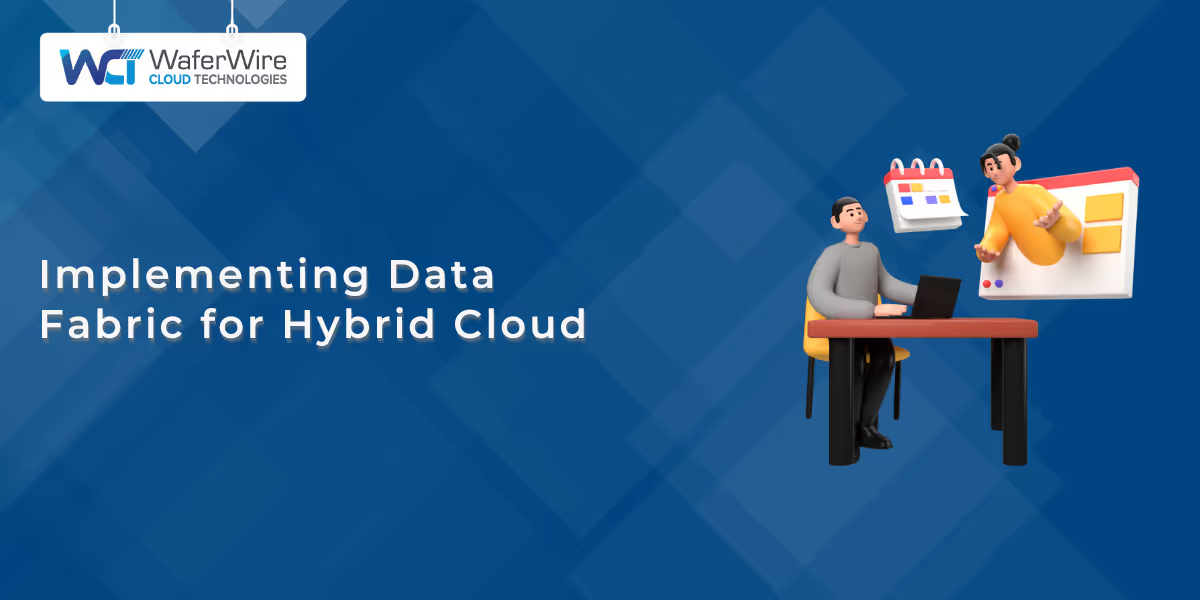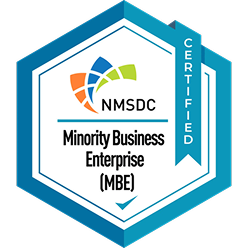

Organizations today must navigate a complex data landscape, with valuable information residing in on-premises systems, across multiple cloud platforms, and at the edge. This data sprawl often hinders agility and limits the potential for transformative insights. A Gartner report predicts that by 2026, organizations leveraging a data fabric will experience a 30% improvement in time to data integration, design, and deployment. The solution to this challenge lies in strategically implementing a data fabric within your hybrid cloud environment.
Let's explore how a well-executed data fabric strategy can revolutionize your hybrid cloud and drive tangible business value.
Organizations are increasingly adopting hybrid cloud configurations that integrate their on-premises infrastructure with public cloud services, allowing them to benefit from cost efficiency, enhanced performance, improved security, and better compliance. A data fabric is crucial to realizing the potential of this diverse environment.
A data fabric is an intelligent, unified layer, not a singular product, but an architectural approach and suite of technologies. This fabric acts as the vital link, ensuring seamless and consistent data access, integration, transformation, governance, and security across all locations, thereby dismantling data silos and providing a comprehensive understanding of information assets.
The ability to unify diverse data sources is paramount for several critical reasons:

A well-architected hybrid cloud data fabric comprises several essential components working in concert:
1. Data Source: The Foundation of Information
This encompasses the diverse locations where your data originates and resides. This includes:
2. Data Ingestion: Bringing Data Together Efficiently
This component focuses on the processes and technologies used to collect, transport, and transform data from various sources into the data fabric. This includes:
3. Data Platform: The Intelligent Core
This is the central layer where data is managed, governed, and prepared for various use cases. It often includes:
4. Data Application: Delivering Value Through Insights
This layer provides the tools and interfaces that users and applications leverage to interact with the data within the fabric. This includes:
Building a successful hybrid cloud with a data fabric requires a strategic and methodical approach:
1. Setting Up Data Pipelines
This involves designing and implementing robust data pipelines that seamlessly extract, transform, and load data from various sources (cloud, on-premises, edge) into the data fabric. These pipelines should be scalable, resilient, and easily manageable. Technologies such as ETL/ELT tools, cloud-native data integration services (including those offered within platforms like Microsoft Fabric), and message queues play a crucial role in this context. It's important to note that the source systems for these pipelines can reside on-premises or across various cloud platforms, facilitating data migration and modernization efforts towards a unified fabric.
2. Ensuring Data Security
Security is paramount in a hybrid cloud environment. Implementing robust security measures within the data fabric is critical. This includes:
Example: Imagine a retail company using its hybrid cloud data fabric for analytics. The on-premises production customer database contains personally identifiable information (PII), such as names, addresses, and credit card details.
For the data science team to build predictive models in a cloud-based analytics platform, they need access to customer transaction data. Instead of providing direct access to sensitive production data, the data fabric can implement data masking techniques to protect it.
This could involve replacing actual customer names with pseudonyms, redacting parts of addresses, or tokenizing credit card numbers to protect sensitive information. This allows the data scientists to perform their analysis effectively without exposing sensitive PII, thus adhering to privacy regulations and internal security policies.
Efficiently managing data flows across a hybrid cloud environment is essential for operational excellence:
1. Orchestrating Data Flows: Automating the Movement
Data orchestration tools are crucial for automating complex data workflows across different environments. These tools allow you to define, schedule, and monitor the execution of data pipelines, ensuring data moves seamlessly and reliably between on-premises systems and cloud services.
2. Scheduling and Monitoring: Ensuring Smooth Operations
Implementing robust scheduling mechanisms ensures that data pipelines run at the right time, meeting business requirements. Comprehensive monitoring tools are equally crucial for tracking the health and performance of data flows, identifying potential issues proactively, and ensuring seamless integration and operation across the hybrid cloud.
A well-implemented data fabric empowers powerful analytics and visualization capabilities across your hybrid data landscape:
1. Using Advanced Tools
Leverage modern BI and analytics tools that can connect to the unified data layer provided by the data fabric. This allows business users and data scientists to explore, analyze, and derive insights from data regardless of its physical location. Cloud-based analytics services often offer advanced features, such as machine learning integration and real-time analytics.
2. Integrating Data Sources
The true power of a data fabric lies in its ability to integrate data from disparate sources for comprehensive analysis and insight. By combining data from on-premises systems, cloud applications, and edge devices, organizations can gain a 360-degree view of their business, leading to more impactful insights and better decision-making.
Adopting a hybrid cloud strategy underpinned by a data fabric offers a multitude of compelling benefits:
A hybrid cloud provides unparalleled flexibility to choose the right environment for specific workloads. You can leverage the scalability and cost-effectiveness of the cloud for dynamic workloads while keeping sensitive data or latency-critical applications on-premises. The data fabric ensures seamless access to and integration of data across these diverse environments.
By strategically distributing workloads based on cost and performance requirements, organizations can optimize their IT spending. The data fabric helps to avoid vendor lock-in. It allows you to leverage the most cost-effective services for your data needs across different cloud providers and on-premises infrastructure.
Hybrid cloud setups inherently offer improved availability and disaster recovery capabilities. Data can be replicated across different environments, ensuring business continuity in the event of outages or disruptions in a single location. The data fabric simplifies the management and recovery of data across this distributed architecture.
To ensure a successful implementation of a hybrid cloud data fabric, consider these key best practices:
Build robust data integration pipelines that break down silos and ensure smooth data movement across environments. Prioritize modern tools supporting diverse sources and transformations.
Consider data virtualization to access data without constant replication, boosting agility and cutting storage costs. Implement an ESB or API gateway for standardized data exchange and simplified management of data. Embed data quality and governance within pipelines through validation and cleansing. Explore event-driven architectures for real-time responsiveness.
A robust metadata management strategy is essential for comprehending data lineage and quality across the hybrid landscape. Select integration patterns, such as ETL, ELT, CDC, and stream processing, based on your specific needs.
Drive your hybrid cloud data fabric with clear business objectives. Identify specific business challenges that it should address, ensuring direct support for these goals through close collaboration between IT and business. Furthermore:
By focusing on efficient data integration techniques and ensuring a clear link to business outcomes, you can build a powerful and valuable hybrid cloud data fabric. What specific challenges or goals are driving your interest in a data fabric?
The combination of a hybrid cloud setup and a well-architected data fabric offers a powerful solution for organizations navigating the complexities of modern data management. The flexibility and scalability of a hybrid approach, coupled with the cost efficiency and improved availability it provides, are amplified by the unifying capabilities of a data fabric.
By breaking down data silos, ensuring secure and governed access, and enabling seamless data flows, a hybrid cloud data fabric empowers organizations to understand the true potential of their data, driving innovation, improving decision-making, and achieving a significant competitive advantage.
Ready to bridge the divide in your data landscape and use the power of a hybrid cloud with a robust data fabric?
Contact WaferWire today to discover how our expertise can help you design and implement a customized solution that unlocks the full potential of your data.

